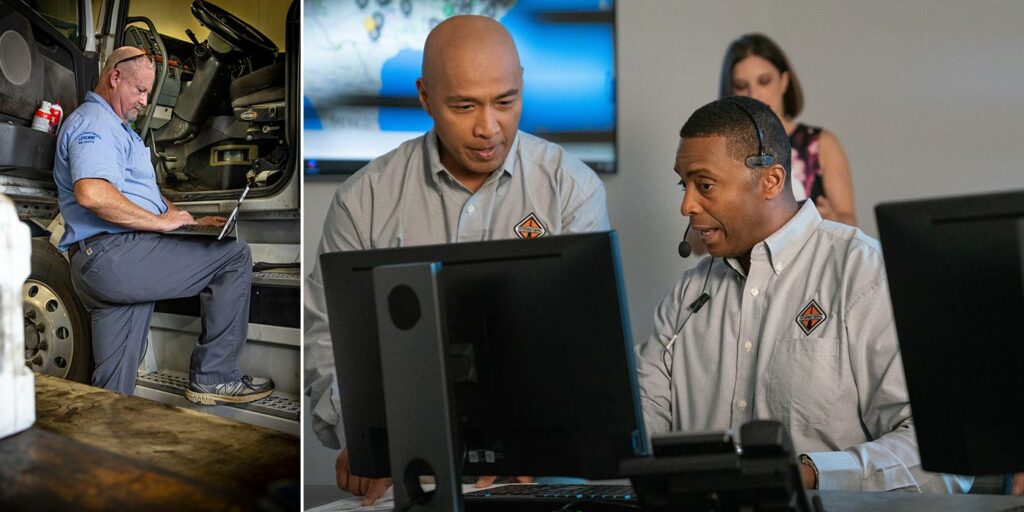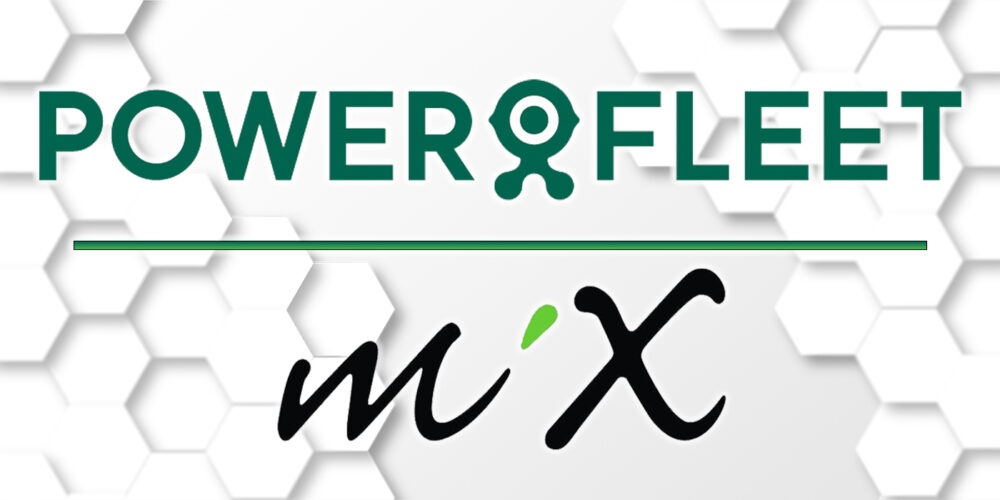Here’s a riddle for you: If time is money and timing is everything, what would it mean to your fleet to save a big ol’ sack full of cash on truck maintenance? In the words of the Red Rocker himself, Sammy Hagar, on Van Halen’s 1991 hit Right Now: “It means everything.”
That is what is on the table for fleets that aren’t taking advantage of today’s remote diagnostics technology. It gives those fleets the opportunity to catch that magic maintenance moment right now, prior to routine PMs to make sure that truck is never stuck on the sidelines.
But, OK, I get it: There’s so much trucking technology out there – telematics, over-the-air updates (you can read the latest on OTA here), sensors, dashboards, ADAS, cameras… do you really need to pile on remote diagnostics too? What if the technology you invested in a decade ago works fine, or your fleet is really small, or you’re really, really good at following strict PM schedules? Should we really be listening to a tumultuous rock band’s second-best frontman on this one? Let’s investigate these cases one at a time.
Trucking technology hasn’t changed enough in 10 years to be worth the upgrade
If you’re still happy with the technology you invested in a decade ago, that’s awesome. But 10 years is an unfathomable amount of upgrade time in the tech world. It might be worth looking into what you’re missing.
“Ten years is a lifetime the way that technology is changing in this space,” says Brian Mulshine, director of customer experience at Navistar. “One of the biggest changes, which is still happening, is how connected vehicle providers are working together on data integration to create a more seamless workflow for fleets. No fleet manager wants to bounce between six different online portals during the day, and often deal with disjointed or even conflicting data. More and more, OEMs, fleet maintenance software providers, fleet management providers, telematics service providers, and others are collaborating to deliver a more seamless user experience that brings that data together in ways that ultimately create deeper and more actionable insights for fleet managers.”
Len Copeland, product marketing manager for Detroit Products, says today’s connected vehicle is capable of broadcasting a variety of telematics data, like engine hours, braking severity, load factor and transmission top gear time, to help fleets understand how vehicles are being operated, identify trends across the fleet and determine which serviceable parts or systems they would like to develop a solution for.
“Service managers can use this telematics data to gain insights into service intervals on heavy-duty vehicles,” Copeland says. “For example, they can download a list of faults across their fleet for the last 30 days, as well as the fault history for individual vehicles, enabling them to conduct further analysis. Telematics data from Detroit Connect can help technicians diagnose, troubleshoot, repair and document, as well as ensure they have the right tools needed to complete the job – further shortening time in the shop.”
Today, a fleet can also receive different levels of alerts based on the severity of an issue. Ashley Murickan, product marketing manager at Volvo Trucks North America, says customers new to this kind of service are often surprised by the amount of support and information they receive to make the right decisions at the right time.
“Volvo Trucks offers Volvo Action Services [VAS] uses remote diagnostics to continuously monitor the truck for potential problems and notifies the customer with different levels of alerts,” Murickan says. “For example, a red-colored alert indicates a more severe issue, whereas a yellow-colored alert indicates an issue, but a breakdown is not imminent. VAS uses this information to coordinate a service event at a dealership based on geographic proximity, service schedule and availability of any necessary parts. Standard on every new Volvo truck, Remote Diagnostics helps avoid unexpected breakdowns, improving uptime.”
Oftentimes today, remote diagnostics will even pair with over-the-air updates to take care of fault codes without even needing to stop for service at a repair facility. One example of this can be found in Mack’s GuardDog Connect integrated telematics solution, which comes standard across Mack’s Class 8 lineup powered by Mack engines.
“Several service alerts can be resolved using Mack Over the Air [OTA], which allows customers to make unlimited driver-activated software and parameter updates, improving uptime and simplifying the update process,” says David Pardue, Mack Trucks vice president of connected vehicle and contract services. “Through Mack OTA, we’re able to provide software updates in 10 to 15 minutes, eliminating what is, on average across the industry, a more than two-day process to schedule a repair time, visit a dealership and hook up to diagnostic and programming tools.”
Remote diagnostics isn’t worth the investment for small fleets
A lot of fleets – big or small – are yet to realize the ROI that remote diagnostics can provide from early detection of issues, says Scott Bolt, vice president of product management at Noregon.
“Fleets no longer must wait for a dash lamp, driver complaint or a sidelined truck to take actionable steps,” he says. “Early detection, coupled with predictive fault technology, presents fleets with the necessary information to address issues before they escalate into costly malfunctions. By doing so, delivery rates improve, fewer tows are required and repair costs decrease.”
Navistar’s Mulshine explains that smaller fleets are often working with a more limited set of resources, and because of this, one truck going down can have an outsized impact on business and cash flow.
“OnCommand Connection offers a weekly report called Fleet Health Monitoring that uses data analytics to flag any vehicles that may be at risk of a breakdown or derate condition, so the issue can be addressed before a vehicle gets taken out of service,” Mulshine says. “And, remote diagnostics go beyond fault code data: an owner can view driving behavior or collision mitigation data on trucks to see if they have drivers who need to be driving more safely – again, helping prevent downtime and safety issues before they occur.”
Aparna Venkatraman, director of digital product management – Cummins engine segment, explains how Cummins Connected Diagnostics can streamline reporting based on the fleet’s human resources available to respond to alerts.
“Cummins finds that larger fleets typically want only to receive urgent alerts from Connected Diagnostics, whereas small fleets can more easily manage receiving all notifications, allowing them to run a really tight ship,” Venkatraman says. “These smaller fleets can use the information from Connected Diagnostics to instantly interpret faults and take action, deciding whether a driver can complete their mission or whether immediate action is needed. Also, small fleets typically won’t have service tools needed to update software, but Connected Software Updates does not need any service tool and is a DIY process that small fleets can adopt so trucks don’t have to visit a service location for software updates.”
On the note of having limited human resources to monitor trucks, Detroit’s Copeland adds that Detroit Connect Virtual Technician is valuable to smaller fleets because the information quickly reaches the people within the organization who need to see when a vehicle is not performing optimally. This allows fleet managers to focus on other aspects of their fleet management while being assured they will get the performance information directly when a truck requires more attention.
Remote diagnostics service providers also typically have a large staff full of experts on hand to assist small fleets with getting the most out of their remote diagnostics and OTA technologies.
“Volvo Trucks’ highly trained employees are always available through the Volvo Trucks Uptime Center in Greensboro, North Carolina, with in-house agents providing industry-leading expertise and support,” Volvo’s Murickan says.
Mack trucks come standard with 24/7 Mack OneCall roadside assistance, says Mack’s Pardue, which can be a huge benefit to small fleets without access to the same IT resources larger fleets might have.
“Mack OneCall agents monitor all alerts detected instantly through Mack GuardDog Connect, which sends all the necessary information, including parts needed, service instructions and diagnostic information, to the nearest service center and a OneCall agent to manage the case,” he says.
As long as trucks are on a solid PM schedule, all the necessary maintenance is getting done
A routine PM schedule is a wonderful place to start. But, basing truck maintenance on the calendar can only provide a fleet interval-based maintenance, rather than condition-based maintenance – and there’s a big difference.
“Interval-based maintenance refers to routine maintenance tasks performed at predefined intervals in order to prevent failures before they happen,” says Dario Molinari, Smart Service maintenance director for Cummins. “But, it’s based on the general fleet and not specific to equipment duty cycle or condition, and because interval-based maintenance may be performed even when not really required, it may not always strike the right balance between risk and reward.
“Condition-based maintenance uses indicators to show signs of decreasing performance or an upcoming failure for each individual truck so maintenance can be scheduled when it’s necessary,” Molinari continues. “Generally, condition-based maintenance increases the time between maintenance events because it’s driven by the condition of individual trucks in the fleet rather than the fleet as a whole.”
Molinari looks to the simple oil change as a use case scenario: “Changing oil based on an interval is not optimized. Understanding the remaining useful life of the oil can help to make an informed decision on when to change it. This allows the fleet to take advantage of the remaining oil’s useful life and reduces the total cost of ownership.”
Fleet managers who are new to remote diagnostics, especially, should consult their provider of choice for guidance to ensure they are able to take advantage of all the data-driven tools available.
“Money is saved over time by optimizing the truck maintenance schedule based on how the truck is used and its operating condition instead of the common static mileage or calendar-based maintenance,” says Volvo’s Murickan. “This approach reduces total cost of ownership, improves uptime and truck availability, and extends the truck’s life span.”
Fleet managers who are new to remote diagnostics, especially, should consult their provider of choice for guidance to ensure they are able to take advantage of all the data-driven tools available.
It looks like the Red Rocker was right. Hey – It’s your tomorrow.














